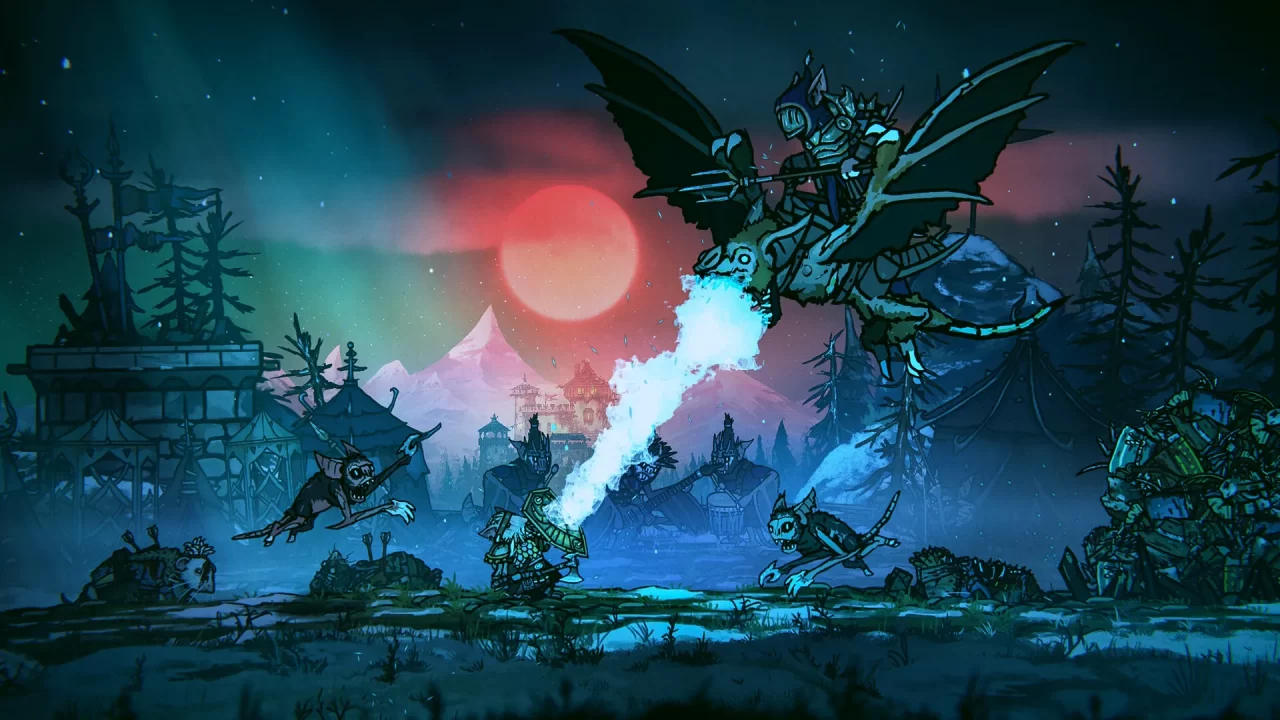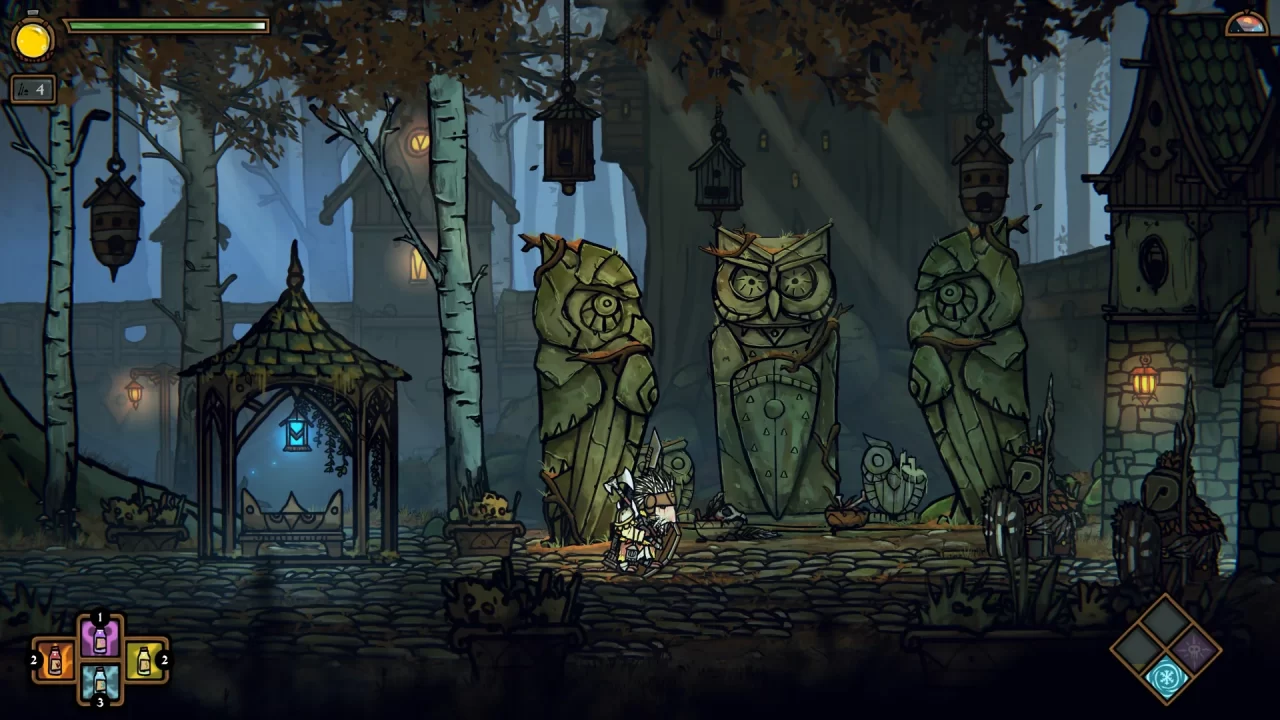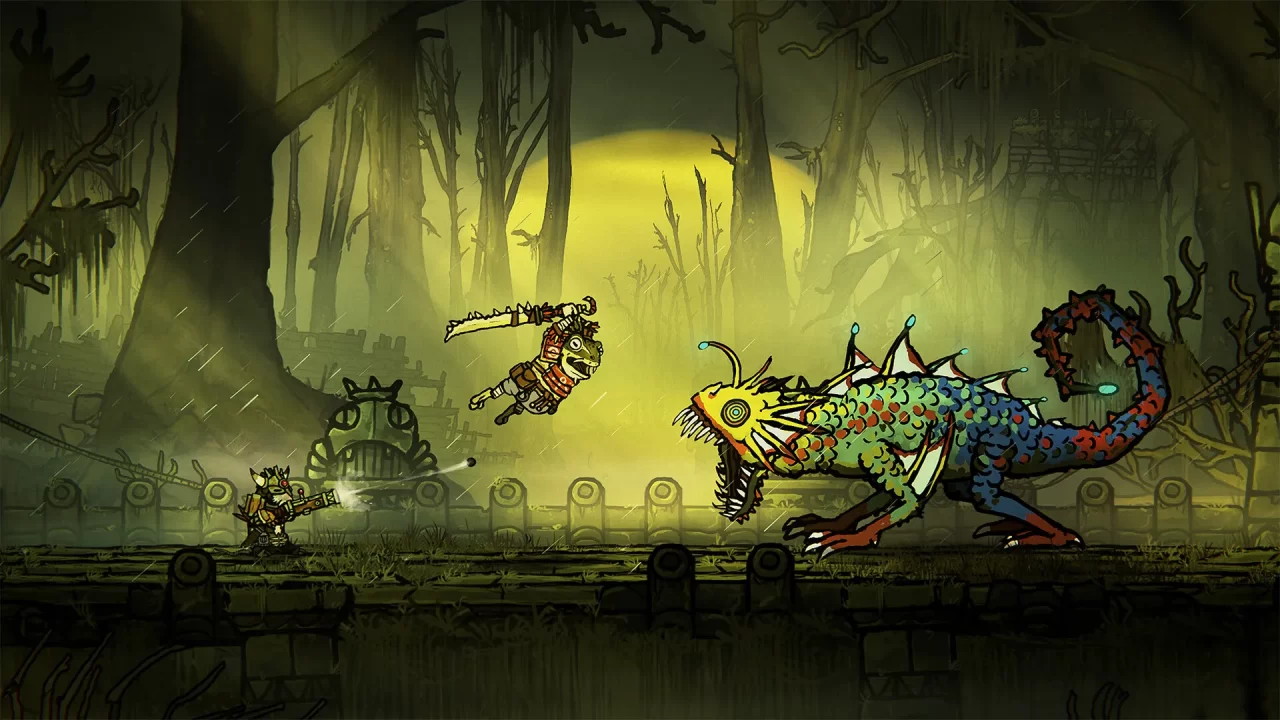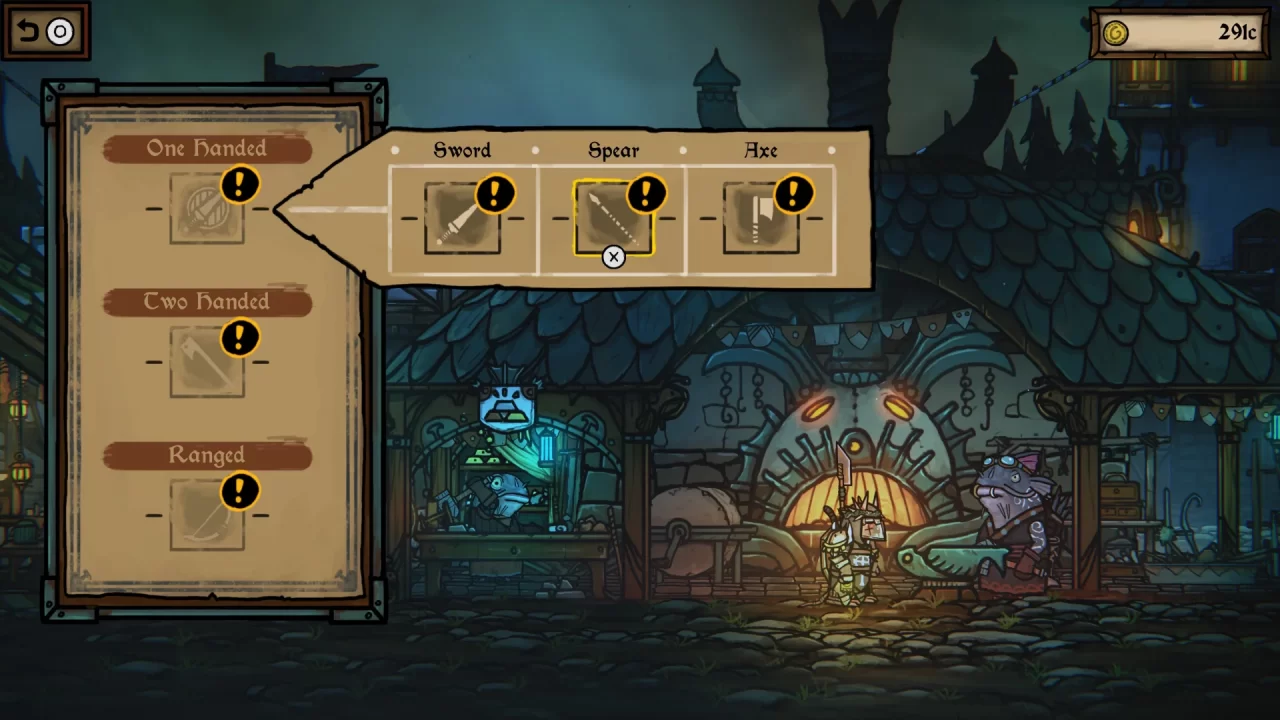Like many of you, I discovered 2021’s Tails of Iron when it was available as a PS Plus freebie in 2023. That oddly stark, gritty, medieval mouse game sat untouched in my library, glaring out at me when I occasionally scrolled by. I had low to nonexistent expectations for its… erm, squeakquel, Tails of Iron 2: Whiskers of Winter, yet fifteen hours and a platinum trophy later, not only will I gladly sing the game’s praises, but I’ll also be eagerly returning to the original with hat in hand and tail tucked between my legs.
The good news is that players unfamiliar with the series do not need to know much of the story to climb aboard Tails of Iron 2. The game opens in a new, wintry country with a new protagonist, Arlo, another noble rat in the greater “ratdom.” Whereas the first game saw primarily rat forces clash against the invading frogs, here, the big bads are the Dark Wings of the Wastes, a brutal army of monstrous bats. When Arlo’s father, the Warden of the icy Wastes, is murdered and his keep, Winter’s Edge, is ruined, the responsibility for rebuilding and enacting revenge is thrust upon young Arlo. Beyond the opening hour, the story consists of Arlo visiting the various animal domains to garner support and materials needed to fend off and eventually strike back at the bats. Across seven biomes you’ll meet the rabbits of White Whiskers, the ruined Frog empire of the Rift bogs, the Owlfolk of the Golden Forest, and more. While the story is nothing to write home about, the game’s climactic final missions are suitably epic and impressive in scope considering the small size of the Manchester-based dev team, Odd Bug Studio. There are also plenty of callbacks and rewarding sequences for those who did play the first game, though new players will not feel too left out of the weight of these certain moments.
Notably returning from the first Tails of Iron is narrator Doug Cockle, who most RPG fans will quickly recognize as the gravelly voice of Geralt from The Witcher games. I appreciate his presence, as otherwise none of the animal characters actually speak, not even in text. Instead, they communicate with each other via instrumental approximations of squawks, squeaks, growls, and burbles, with little speech bubbles flashing illustrated hints about forthcoming objectives. Sadly, the LEGO Star Wars-style nonverbal communication used here is not all that clever or clear, so all context clues come from Mr. Cockle’s narration. This leads to one of my larger complaints about Tails of Iron 2, especially its first half. Tonally, Tails of Iron 2 can’t quite decide where to nestle itself. The narration will delve into dad joke-caliber animal puns at irregular intervals, which often seem at odds with the grimy (yet beautiful) hand-drawn art style and the callous, downright cruel way the game treats its NPCs. You’ll watch as bosses mercilessly behead an entire family of animals, or seemingly important characters are crushed and tossed aside like lifeless dolls in ways that are neither shocking nor emotional. The tone is not quite edgy, certainly not cute, and veers so jerkily between two extremes that I fluctuated between feeling disgusted and, worse, unaffected, by the gore. The tone does level out, especially closer to the finale, but I couldn’t help but feel like the stellar visual world-building was wasted by a lack of firm identity.
The music is barely present or noticeable outside of a few fun scenes where the bat legions in the background of a boss arena will play a diegetic hard rock track. Instead, ambience is built up via hefty sound design, reminding me of 2009’s Demon’s Souls in the way Arlo’s armor clanks as he moves, or with the ringing of swords clashing against shields and bouncing off cave walls. Enemies sound and look appropriately horrific, and the backgrounds are richly detailed and layered. Be it autumnal forest, windswept tundra, web-infested tunnel, stormy marsh, or blood-soaked castle, the world you’re whiskered through looks undeniably gorgeous.
Tails of Iron 2 has happily marketed itself as a 2D Souls-like, but you can find plenty of other inspirations in the game’s mechanics. Combat consists of balancing your single-handed weapon (spears, swords, or axes) with your shield. You have one main attack button that you can charge or chain into short combos, and with another button you have a heavy two-handed weapon (bigger spears, swords, or axes) that can charge up to leap toward and crush enemy shields. Then there’s the limited ammo of your bow, crossbow, or blunderbuss, and the ability to block enemy attacks, double-roll out of their way, or block at just the right time to parry. I did find, though, that the variations of each weapon type did little beyond visuals and a slight speed change to switch up the combat. Still, the core swordplay is intense and feels meaty, thanks to excellent sound design and heavy controller rumble. Every enemy encounter poses the threat of quickly depleting your tiny health bar. Enemies flashing with white indicators? Here comes a projectile you can block. Yellow? There’s a fairly generous parry window that only punishes you by knocking you back if you at least block. Red? Roll mousey roll. It’s a simple system, but one that leaves little room for mistakes.
Thankfully, Tails of Iron 2 gives ample checkpoint benches before each fight, so when you inevitably perish to a giant frost-bat or rabid WereOwl, the runback to the fight’s arena is only ever seconds away. The lack of hitstun or staggering against enemies can make some group enemy encounters frustrating. Still, it’s a fun white-knuckler, and you can always change between three difficulties if a boss gives you too much or too little trouble. I played the whole way through on the standard difficulty, and though I died a lot, I never felt stuck, apart from a couple of larger beastly bosses whose hitboxes felt a tad frustrating: the Elder WereOwl and the Toadcor. Good rodents!—er, riddance! Besides those two, most encounters will start with your immediate death and, after a few tries, successfully end with you not getting a scratch on you, provided you pay attention to the colored cues in the chaos.
Tails of Iron 2’s healing system is also worth noting. You have a flask which, at first glance, is not unlike Dark Souls’ Estus Flask in that you mainly refill them near checkpoints. However, healing requires you to hold the button and slowly chug the flask, reinvigorating you little by little while reducing your movement to a slow walk. This flask has no upgrades, so by the endgame you’ll only be able to replenish around half of your full health bar. What this led to, it took me too long to understand, is that your health flask is best used to give yourself just enough health to sustain another would-be final hit, as most attacks will reduce you to a speck of health and set the screen flashing grey and red. Given a little recovery time and a few ounces of health flask, you can take another not-so-fatal blow. Dare I call it mouse-to-mouse resuscitation? This discovery led to some interesting strategizing for longer boss fights and made it very exciting to always be just two hits from death.
Beyond the Soulsborne of it all, Tails of Iron 2 takes a surprising amount from Capcom’s Monster Hunter series. Weapon and armor crafting trees look ripped straight from the Japanese giant, right down to the bounties and subsequent collecting of claws, teeth, and other monster bits. There’s even a sharpening stone item you can use mid-battle to raise your weapon damage. You can greatly alleviate the difficulty by having the proper gear, both in elemental offense and defense—ice, fire, electricity, and poison. Little Arlo will even stoop down and find clues showing bestiary entries and weaknesses of upcoming enemy encounters, which can turn a 10-damage swing into 100. Though I played most of the game with light armor, I later realized that there was almost no discernible difference in my movement with an ‘ultra-light’ armor weight and the heaviest it could be; like the weapon types, encumbrance ultimately had little impact on gameplay. Upon completing each of the game’s kingdoms, the map opens up to allow giant monster hunting. If you so please, you can fast travel to a centipede’s nest and whittle its health down a third, only to have it scurry off to another part of the map in Monster Hunter fashion.
Also new to Tails of Iron 2 are the elemental traps you can set, not to mention the (slightly) upgradeable magic spells you can use to freeze, poison, burn, or paralyze enemies. I love when a game necessitates every button on the controller and requires their careful usage in combat, and this is something Tails of Iron 2 gradually teaches you well, as it’s very satisfying to fail an encounter, prep properly, and come back triumphant. With the wide variety of enemy types, the core gameplay stays challenging, fun, and rewarding all the way through.
Tails of Iron 2: Whiskers of Winter took me by surprise, successfully combining blatant inspirations from the big cheeses of action RPGs and reinterpreting them in a fine, nibble-sized package. It looks simultaneously beautiful and intentionally rough, and its combat is challenging but (mostly) fair. I’m not sure it needs to continue doubling in size with its potential third entry—it’s a little fighter, and rat’s good enough.






